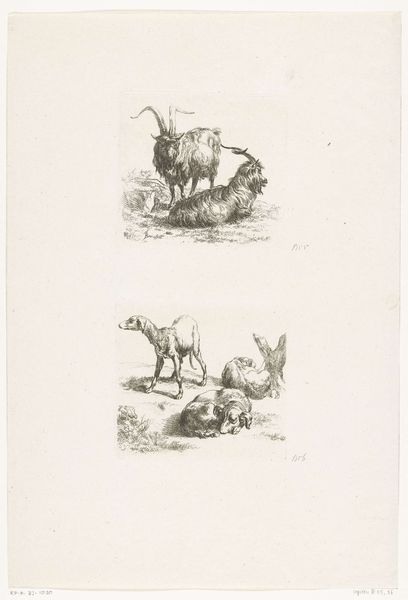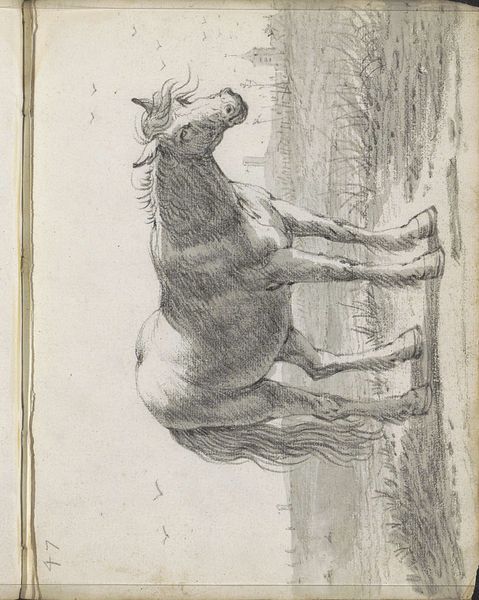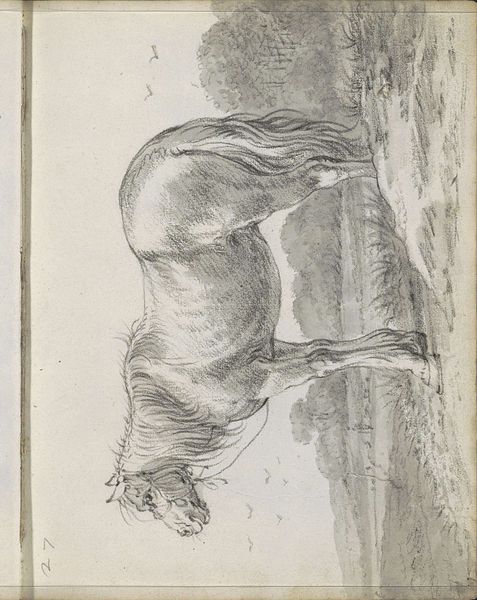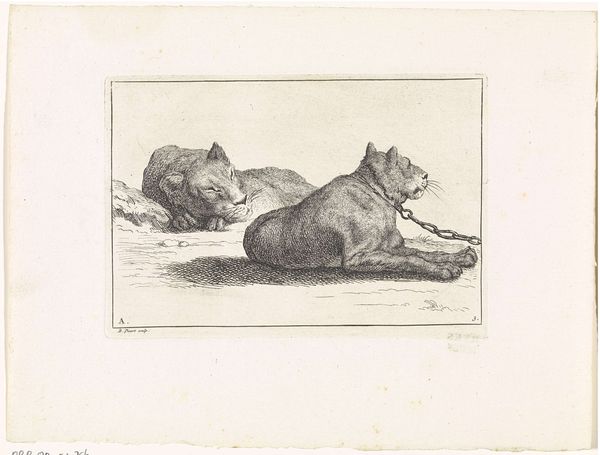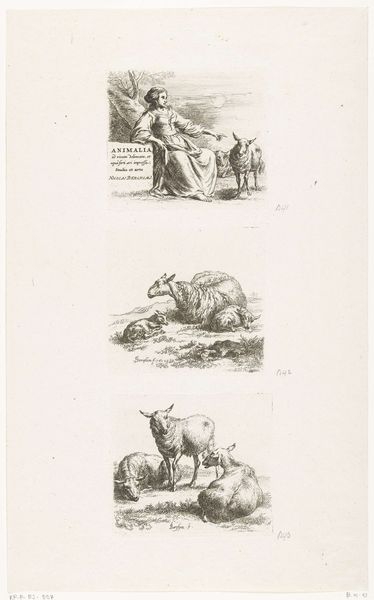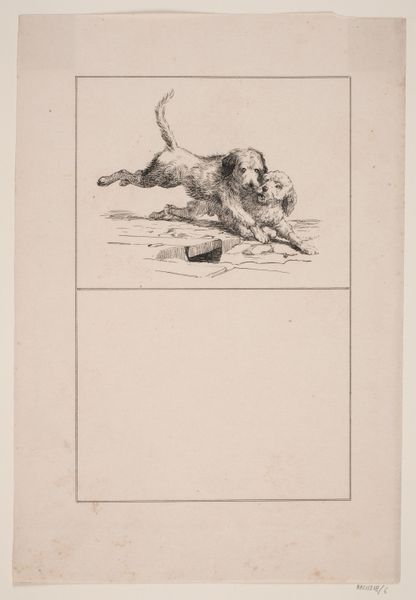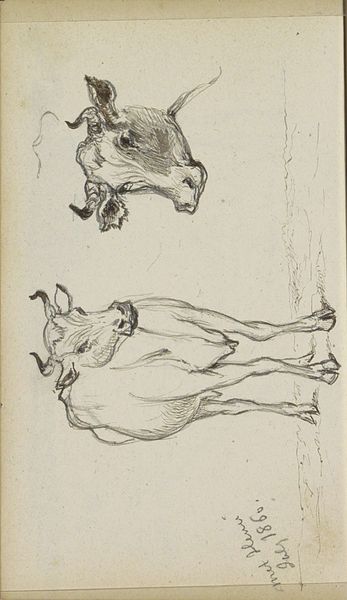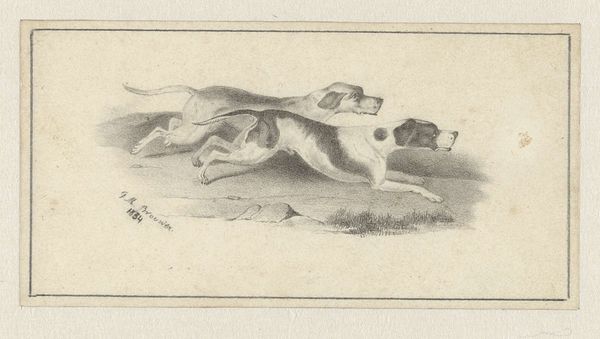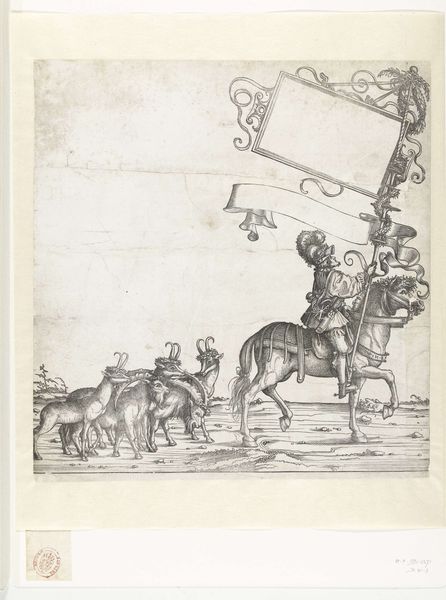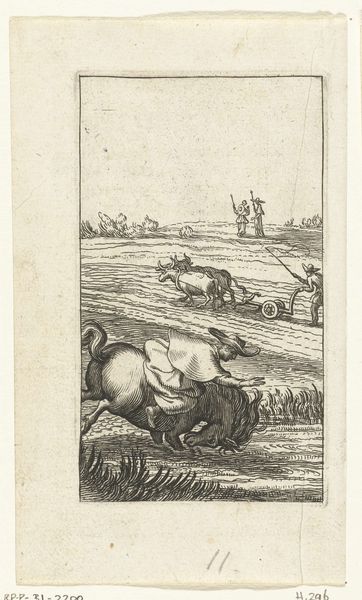
drawing, paper, ink
#
drawing
#
neoclacissism
#
animal
#
pen sketch
#
pencil sketch
#
landscape
#
paper
#
ink
#
genre-painting
#
realism
Dimensions: height 207 mm, width 129 mm
Copyright: Rijks Museum: Open Domain
Editor: This drawing, "Liggende koe / Grazend schaap naar rechts," by Wouter Johannes van Troostwijk, done between 1792 and 1810 using ink on paper, seems so simple. Just a cow and a sheep, each in their own rectangle. The realism is nice, but what else should I be seeing? Curator: Well, let’s think about the public role of art at this time. The late 18th and early 19th centuries witnessed the rise of Neoclassicism and also burgeoning scientific classification systems. Van Troostwijk presents the animals in an almost taxonomic way, separated and observed. What statement might the artist be making about the social landscape by focusing on these specific animals in this structured format? Editor: It's interesting you say taxonomic. It does feel a bit like looking at a study, like a biologist’s notebook. Were these kinds of genre scenes becoming more popular or meaningful due to shifts in social structures and emerging sciences? Curator: Precisely! As urban centers grew, there was also an increasing interest – or perhaps even nostalgia – for rural life. Think about how landscape painting also rose in popularity. How might this artwork, depicting these common farm animals, speak to the relationship between the rising merchant classes and the agrarian roots of Dutch society? Editor: So, by depicting something familiar, he might be making a comment on a societal shift. I guess I hadn't considered the socio-political aspect of what seemed like a simple genre painting. Curator: Exactly. And don’t forget how these images might have circulated. Drawings like these were often reproduced as prints. Who would have bought them, and where might they have been displayed? Editor: Probably people who were part of that societal shift, maybe decorating their homes or using them for educational purposes? This reminds me to consider context next time. Curator: Exactly! Paying attention to those kinds of questions about art and its audience transforms our understanding.
Comments
No comments
Be the first to comment and join the conversation on the ultimate creative platform.


